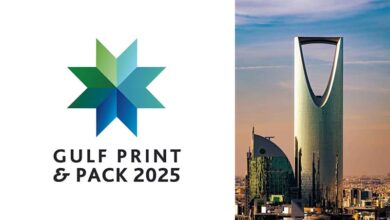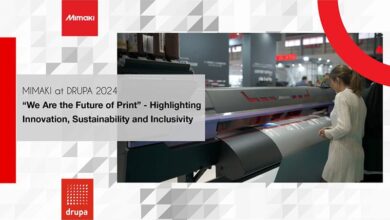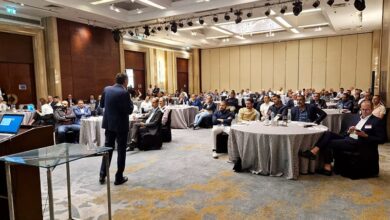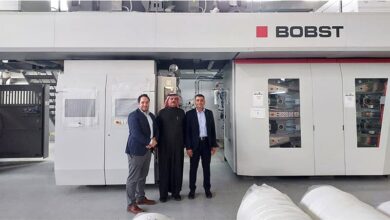
Exclusive interview with Adrian Cafferkey, Regional Head – Middle East & Africa, PFU (EMEA) Limited
Here is the question: Does anyone use scanner anymore? After all there are tons of mobile apps for scanning operation. Well. it seems that scanner in deed is still a necessary heavy duty device that scans documents in a neat manner.
In order to find out more about world of scanners and its relevance in today’s mobile frenzy world we sat down with Adrian Cafferkey, Regional Head – Middle East & Africa, PFU (EMEA) Limited – a Ricoh Company. Operating in Europe, the Middle East, and Africa, PFU (EMEA) Limited is responsible for marketing and sales of Fujitsu document scanners. The European company was established in the United Kingdom in 1981 and has offices in Germany, Italy and Spain and Knowledge Suites in London, France, and Dubai.
Here are the excerpts:
- The current scanning apps have covered almost all the functions of the scanners, and even includes the function of extracting text, form recognition and document conversion, so do we still need professional business scanners?
To produce good quality images from mobile devices such as phones or tablets, there are a variety of factors that must be manually balanced by each user including ensuring flat angles, correct focus and lighting. This can lead to inconsistent results, while retaking poor shots can make scanning more than the occasional individual sheet at a time a major chore. Professional business scanners can deal with regular volumes and multiple sheets at a time – a typical requirement when capturing information into workflows. When it comes to OCR accuracy, consistency of output quality is an important factor. The best professional business scanners are designed and engineered to deliver this in such a way that efficiency gains are there for the taking, simply by dropping documents into the ADF and pushing a button.
- All in all it seems that scanners are a declining market since most documentation is done digitally these days, and phones are good enough at it that it’s hard to justify the money and the space having a scanner requires. What do you think?
According to a recent Quocirca report, the scanner market is certainly still a very healthy one. Some businesses may be making strides to using much less paper internally, but due to the centuries-long ubiquity of paper, it has become so entrenched in our processes that they still have to deal with incoming paper from many external sources. In fact, 44% of organisations cite scanning as major factor in digital transformation, 68% of organisations have funding for digitisation projects and 77% of organisations scan all or the majority of their paperwork directly into business workflows. This may be down to the fact that, in building robust business systems, organisations need consistent, efficient processes. This is where professional scanners come into their own, delivering the benefits of efficient capture with minimal operator training required. Furthermore, modern scanner ranges focus on delivering solutions that fit elegantly into the modern workplace and allow multiple users to share scanner units, providing scanner architecture options beyond the traditional one scanner per PC model.
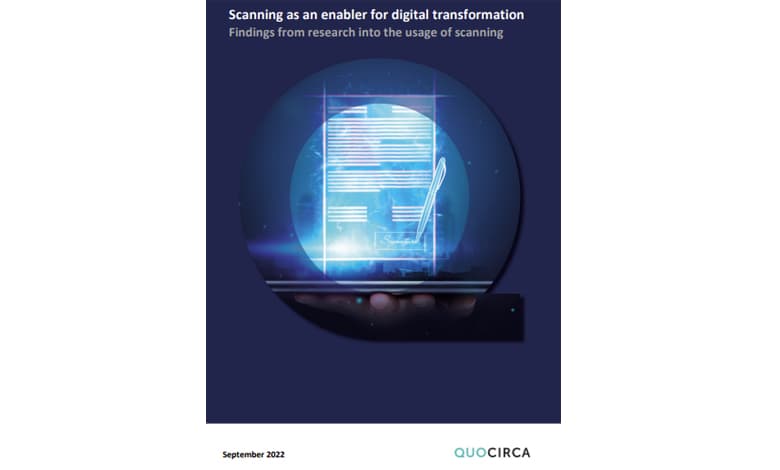
- As far as I understood you are offering two lines of scanners in UAE, ScanSnap and fi-8000, what are the differences between two and who are you targeting with these scanners?
PFU brings both the world’s number one and number two scanner brands to the Middle East market. ScanSnap delivers plug-and-play personal productivity for individuals and SMEs. Because of its simplicity, both in terms of setup and intuitive interface, ScanSnap is the smarter way to work for individuals with no IT experience or support, always following the mantra: ‘you don’t need to know IT, just how to push a button.’
Meanwhile, Fujitsu Image scanners, the world’s most trusted scanning technology, are all about organisational productivity, where people have a requirement to capture information into workflows or business systems. The Fujitsu scanner brand comprises two families: the SP series – the dedicated day-to-day budget-conscious scanner; and the fi Series of which the newly launched fi-8000 models are the flagship range. Offering advanced tech engineered to the highest specifications, the fi-8000 Series contains innovations which have redefined business scanning. Our unique Clear Image Capture technology delivers unmatched image quality, while features such as Automatic Separation Control deliver industry-leading feed reliability, paper protection and an unsurpassed user experience.
- Scanners are part of your solutions to support GCC economy’s goals of digitization and digital transformation what other solutions you are offering companies to help them in their transformational journey?
PFU’s mission is to enable the world’s flow of knowledge. In addition to our market-leading hardware and software image capture solutions, we also provide development and integration services through our Software Solutions. Our expert co-creation team can build discrete bespoke capture solutions, or integrate scanning as part of a wider development team. And via our Imaging Alliance Program, they can also ensure other people’s integrations are smoothly completed, providing complimentary advice and support as a benefit of program membership.
- What are the major challenges of SMEs and large enterprises post covid and how your products can help them improve their productivity?
According to Quocirca reports, there has been a shift in focus in the past years. In 2019, profitability was the key driver for digital transformation for about one third of organisations. Now, post-Covid, business agility is number one (53%). Interestingly, solutions which can be easily integrated into other business systems are also high on the list of desired capabilities – suggesting that maximising strategic value is another key goal for businesses. By automating capture and distribution of incoming information to the right systems and people, our solutions can both efficiently increase organisational productivity, while also increasing Organisational Intelligence – enabling end users to derive maximum value from the data they have access to.
- Are you offering your scanners as OEM to other suppliers as well?
Through our Imaging Alliance Program, we work with ISV partners who want to integrate our scanners with their software applications, to provide pre-integrated solutions to the market. By giving them access to SDKs, APIs and the relevant tools and development support, we can make integration faster and easier. We also provide exposure for these approved partner solutions to both end users and through our Imaging Channel Program, where our community of resellers have the chance to find them and take them to market.
- Normally in an organization or company devices from different vendors are installed and inevitably these devices have to interact with each other, for example a printer with a scanner. There are also multifunction devices that offer scanning printing and copying capabilities using only one device, how does your scanners fit in such an environment?
While multifunction devices focus primarily on printing with ad-hoc scanning a secondary facility, for regular capture of paper-based information into workflow systems, a specialised capture solution can offer superior results in terms of output quality, operational performance and user experience. We find that dedicated scanning solutions and MFPs are often complimentary solutions to one another. And our partner community are experts at helping to find the right solutions to fit our end users’ needs.
- How does Scansnap Arabic benefit Arab speaking users?
Thanks to the Arabic user interface, Arabic speakers now get to enjoy the full ScanSnap experience. Through its powerful ScanSnap Home software, users can quickly and easily convert documents into the applications they use, whether that’s editable Word, Excel or Powerpoint files, or searchable PDFs.
To date, the smarter way to work has enabled over 6 million small business owners, employees and individuals to save time & money by easily and efficiently organizing and sharing documents, while backing up important information. As the market-leading personal scanner, ScanSnap is simplicity itself, focused on providing an easy and intuitive way to make paperwork for you and your business.
- Today sustainability is huge and customers ask for sustainable products, in which way your scanners can be considered sustainable?
On a technological front, our unique Clear Image Capture technology has enabled the new fi-8000 Series range to reduce power consumption by up to 25%. And while any manufactured item will have a production cost in terms of resources utilised, organisations can significantly reduce cost and consumption in many other areas by enabling more efficient processes. For instance, LCL – Banque et Assurances, made an annual logistics saving of an estimated €4million by using our fi-7300NX solution to digitise and verify product applications in-branch while still with the client. This would have also reduced the required number of client visits into branches and the associated impacts of their travel.
- Scanners are part of an IT structure within a company do you also help your customers to improve and upgrade their IT structure?
We know that closer integration of systems can lead to greater benefits across organisations – both in terms of operational efficiency through automation of processes, but also in allowing information to be made accessible to the right systems and right people, at the right time. Viewing an organisation as a system of data pathways can highlight opportunities to help information flow and be used more readily, to produce better, more robust insights. This is what we mean when we talk about increasing Organisational Intelligence.
Those insights can support breakthrough business transforming decisions which not only drive profit, but could potentially create a sustainable competitive advantage which is difficult to replicate. This is why we see capture as the foundation of digital transformation and integral to getting more value from even existing IT infrastructures. Capture provides source data – the lifeblood of downstream analytical processes. And it’s this criticality to their effectiveness that makes the quality of both the source data, and the process by which it is captured, ever more important.

